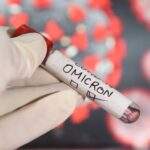In the early months of 2020, the world watched in shock as a novel virus swept across the globe, leaving a trail of illness, death, and uncertainty in its wake. Fast forward to 2021, and hope began to dawn on the horizon in the form of COVID-19 vaccines. However, the journey from vaccine development to widespread distribution was nothing short of an odyssey. In this blog post, we’ll explore the intricacies of the USA’s vaccine distribution effort, a monumental undertaking that showcased the power of science, logistics, and collaboration.
- The Scientific Triumph:
The foundation of the vaccine distribution success story lies in the remarkable scientific achievement of developing multiple effective COVID-19 vaccines in record time. The USA, along with pharmaceutical companies and research institutions, raced to create vaccines that would combat the virus.
Key vaccines, such as Pfizer-BioNTech, Moderna, and Johnson & Johnson, went through rigorous testing and clinical trials, ultimately receiving Emergency Use Authorization from the FDA. The rapid development of these vaccines demonstrated the remarkable capabilities of modern science and biotechnology.
- Logistics on a Grand Scale:
Once vaccines were authorized, the USA faced an enormous logistical challenge: how to distribute these vaccines to hundreds of millions of people across the country. The task involved coordinating the production, transportation, storage, and administration of vaccines on an unprecedented scale.
The distribution network included collaboration between government agencies, pharmaceutical companies, healthcare providers, and countless logistics partners. Ultra-cold storage requirements for some vaccines added an extra layer of complexity. The creation of mass vaccination sites, mobile clinics, and partnerships with pharmacies and healthcare providers helped ensure accessibility for all Americans.
- Overcoming Challenges:
The vaccine distribution journey was not without its obstacles. Supply chain disruptions, vaccine hesitancy, and equity concerns were among the challenges that the USA had to address. Still, innovative solutions emerged, such as pop-up clinics in underserved communities and targeted outreach campaigns to build trust and combat misinformation.
- The Role of Technology:
Technology played a pivotal role in the vaccine distribution process. Online scheduling systems, data analytics, and mobile apps helped streamline appointments and track vaccination rates. These digital tools ensured that vaccines reached their intended recipients efficiently.
- Community Involvement:
Another critical aspect of the USA’s vaccine distribution success was the involvement of local communities. Volunteers, healthcare workers, and community organizations came together to support vaccination efforts. Grassroots initiatives played a vital role in reaching vulnerable populations and fostering a sense of solidarity.
- The Path Forward:
As the USA achieved significant milestones in vaccine distribution, the fight against COVID-19 was far from over. Ongoing efforts include booster shots, addressing variants, and addressing global vaccine equity. The experience gained during the vaccine distribution process will serve as a valuable resource for future public health crises.
The USA’s vaccine distribution journey showcased the nation’s ability to mobilize resources, overcome challenges, and prioritize the well-being of its citizens. It was a testament to the power of science, logistics, and community collaboration. As we reflect on this remarkable achievement, it reminds us that even in the face of daunting challenges, humanity has the resilience and innovation to overcome and emerge stronger. The vaccine distribution odyssey was a triumph of science and logistics, a chapter in history that will be remembered for generations to come.
COVID-19 Test near South Brunswick, Dayton, New Jersey Book an Appointment / Call (888) 460 1151 / Walk-Ins also available


